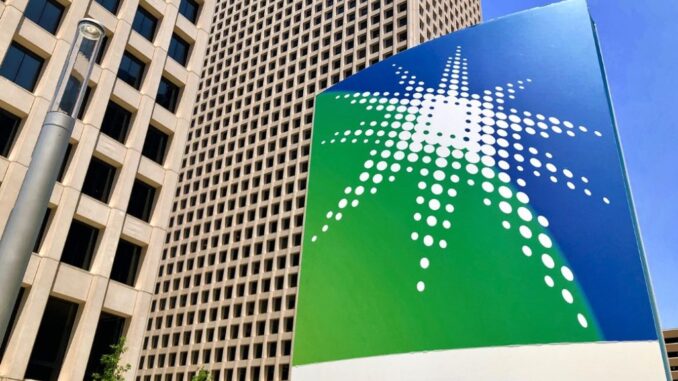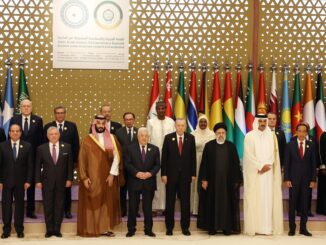

Trump’s Oil Price Doctrine: A Balancing Act for U.S. Interests
Every $10 shift in oil prices translates to a 25-30 cent change in gasoline costs, impacting U.S. consumer spending by over $1 billion annually for each cent increase. Politically, this doctrine is a winner: Presidents have won re-election 11 out of 11 times without a recession in the two years leading up to the vote, but only once out of seven when one occurs. Trump’s team has made it clear that deviations from this range won’t be tolerated, with a senior legal figure from his first administration bluntly stating, “We’re not going to put up with any more crap from the Saudis.”
The roots of this conflict trace back to Saudi-led oil price wars in 2014-2016 and 2020, where the Kingdom flooded the market to undermine U.S. shale competitors. The 2020 episode, amid the COVID-19 pandemic, saw prices crash, prompting Trump to intervene directly. In a phone call to Saudi Crown Prince Mohammed bin Salman on April 2, 2020, Trump threatened to withdraw U.S. military support and end the longstanding 1945 U.S.-Saudi Agreement if OPEC didn’t cut production. This forced Saudi Arabia’s hand, but the resentment persists.
In his second term, Trump has doubled down, wielding tools like the “No Oil Producing and Exporting Cartels” (NOPEC) Bill. This legislation, poised for quick passage, would criminalize OPEC’s production caps and price-setting, stripping sovereign immunity and opening Saudi Arabia to U.S. anti-trust lawsuits. The fallout could be severe: seizure of Saudi’s $1 trillion in U.S. investments, frozen bank accounts, and restrictions on dollar-denominated oil trades. For Aramco, majority-owned by the Saudi government, this could mean court-ordered breakups to foster competition.
Aramco’s Financial Squeeze: Dividends, Dividend Pressure, and Asset SalesWith Brent crude averaging around $70 per barrel—nearly 30% below Saudi Arabia’s fiscal breakeven of $90.9 per barrel—Aramco is hemorrhaging profits. The company reported a 5% year-on-year profit decline in the first quarter of 2025, with second-quarter net profit projected at $24.8 billion, down from $25.5 billion in the prior quarter.
This has led to expected dividend cuts of nearly a third in 2025, from $124.3 billion in 2024 to around $85.4 billion, eroding investor confidence that was built on promises of high payouts during Aramco’s 2019 IPO.
To bridge the gap, Aramco has turned to debt and asset divestitures. It issued $9 billion in bonds in 2024 and another $5 billion in 2025, but rising debt levels invite scrutiny from bondholders, many with U.S. connections.
More recently, Aramco is eyeing the sale of stakes in up to five gas-fired power plants, a move that could generate approximately $4 billion. These plants are part of Aramco’s 18 owned or co-owned facilities, which power its gas plants and refineries. The divestiture is viewed as either a strategic shift toward core oil and gas upstream activities and high-growth areas like LNG and downstream refining, or a response to mounting dividend obligations and cost-cutting pressures.
This comes amid broader market dynamics: Saudi crude production rose to 9.2 million barrels per day (bpd) in May 2025 as OPEC+ unwinds cuts, with an additional 411,000 bpd increase planned for August. Exports surged 7% in June to 6.36 million bpd, the fastest pace in over a year. Yet, subdued global prices and oversupply risks persist, with Aramco forecasting a 1.6 million bpd demand uptick in the second half of 2024.
Western investors, labeling Aramco “omni-toxic” due to geopolitical risks, are wary. Asset sales might provide short-term relief, but they also risk funneling funds into Vision 2030 “vanity” initiatives, such as the downscaled Neom City (from 170 km to 2.4 km by 2030) or the 2034 FIFA World Cup, rather than bolstering core operations.
For Saudi Arabia, which holds an 81.5% stake in Aramco, the stakes are national. The company’s dividends, royalties, and taxes fund critical projects amid a budget strained by low prices. Trump’s threats invert the power dynamic, leaving the Kingdom vulnerable— as one analyst quipped, inverting Theodore Roosevelt’s famous line, Trump has Saudi Arabia “got by the balls.”
Looking forward, Aramco’s inability to push prices higher without U.S. backlash could accelerate its pivot to LNG and international refining, such as the $10 billion Sinopec refinery in China and talks for a new Indian facility.
But with global demand at 103.84 million bpd in 2024 and volatile OPEC+ adjustments, the energy giant remains caught in Trump’s vice. As one humorous aside suggests, Aramco might need to use unconventional solutions—like tapping soccer icon Cristiano Ronaldo for a bailout—but the reality is far more sobering. In Trump’s oil doctrine, Aramco simply can’t secure a sustainable win. This tension highlights the fragility of global energy interdependence, where U.S. domestic politics can dictate the fortunes of the world’s largest oil exporter. As markets evolve, Aramco’s strategies will be watched closely for signs of adaptation or desperation.







